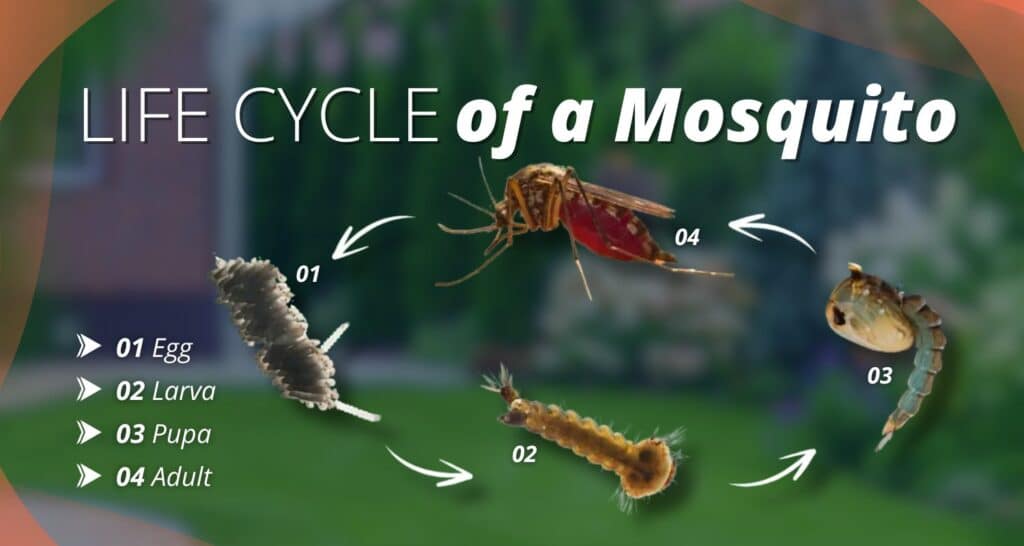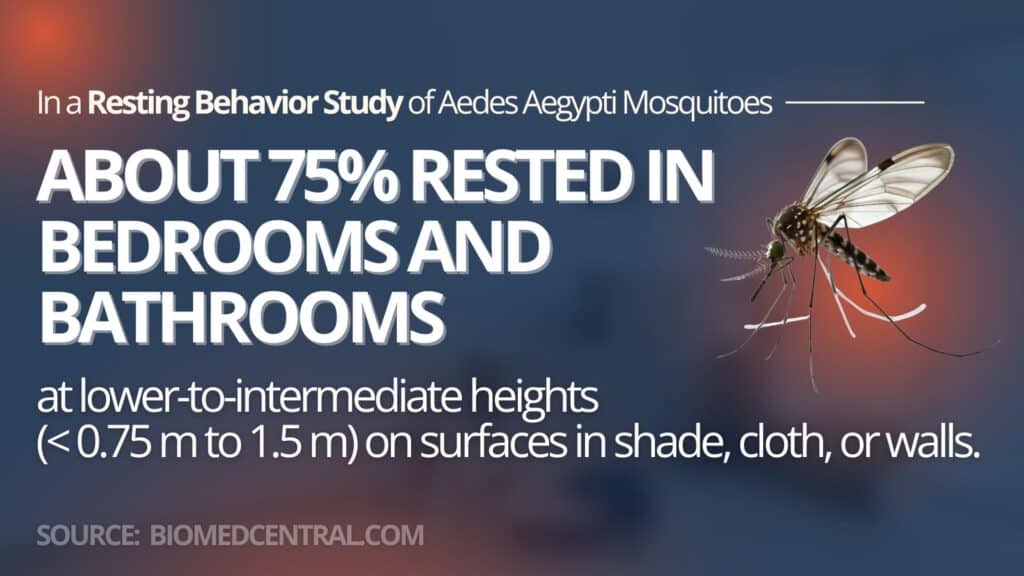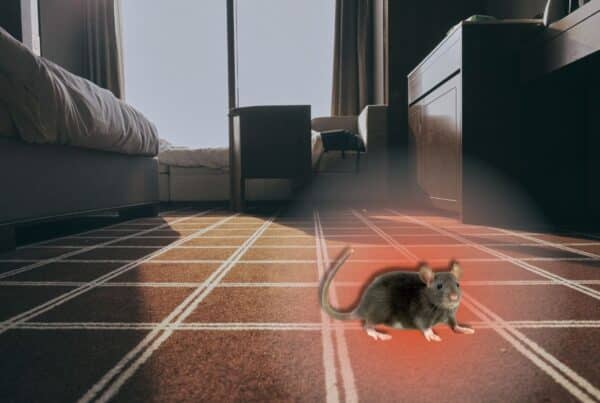Mosquitoes don’t just nest in the woods or swampy lakes. Many of them are born right in your backyard. Once you know where they nest and breed, you can stop their life cycle and keep your home mosquito-free.
Mosquitoes are one of the most common and frustrating pests in Texas. At Grand Slam Pest Control, we help homeowners across the state identify and eliminate mosquito problems safely and effectively.
Here’s what you should know about where mosquitoes live, breed, and how to keep them away.
Where Mosquitoes Nest Around Homes
Unlike ants, rats, or wasps, a mosquito won’t build a physical nest. Instead, they look for cool, damp places where they can rest during the day. These “nests” are really just hiding spots that protect them from heat, sunlight, and wind.
Common mosquito nesting areas:
- Tall grass and dense shrubs near fences or patios
- Shaded areas under decks, porches, or patio furniture
- Clogged gutters filled with leaves and water
- Damp corners of sheds, garages, and carports
- Piles of yard debris, mulch, or wood
- Spaces under tarps, toys, or garden tools left outside
When you see mosquitoes suddenly swarm after stepping into a certain area, it’s a sign they are nesting nearby. These shaded, humid zones allow them to survive even in extreme Texas heat.
Pro Tip: Check under decks and near plants around noon, when mosquitoes hide to avoid sunlight. If several fly up when disturbed, you’ve likely found one of their resting sites.

Where Mosquitoes Breed
Breeding is different from nesting. While nesting areas are where adult mosquitoes rest, breeding areas are where they lay their eggs.
Every species of mosquito needs standing water to “nest” or comfortably life and reproduce. Even the smallest puddle can support hundreds of larvae.
Some choice breeding sites for mosquitoes:
- Buckets, toys, and flowerpots holding rainwater
- Birdbaths and pet water bowls
- Low spots in the yard where water collects
- Drain trays under plants
- Clogged gutters and downspouts
- Wheelbarrows and kiddie pools left uncovered
- Old tires or tarps that trap moisture
It takes less than a week for a mosquito egg to become a biting adult in warm weather. That means one rainfall can create a full-blown infestation if water is left sitting for too long.
How Fast Mosquitoes Multiply
| Stage | Where It Happens | Timeframe | Key Threat |
| Eggs | Laid on still water or damp soil | 1–2 days | Begin next generation |
| Larvae | Live underwater, feeding on bacteria | 4–10 days | Grow rapidly in warm weather |
| Pupae | Resting stage under water | 2–3 days | Transform into adults |
| Adults | Out and about | Live for 2–4 weeks | Bite and reproduce immediately |
Pro Tip: Empty or treat any standing water every three days to break this cycle before mosquitoes hatch.
What Attracts Mosquitoes to Certain Areas
Mosquitoes are very predictable, even though they don’t nest like other pests. They return to the same types of spaces again and again because they depend on certain conditions to survive.
1. Standing Water
Mosquitoes need stagnant water to nest or lay eggs. Even a bottle cap or clogged gutter is enough. After heavy rain, walk your property and look for anything that collects water.
2. Shade and Humidity
Direct sunlight kills mosquitoes quickly, so they seek out shaded areas with high humidity. Thick landscaping and untrimmed yards create perfect hiding places.
3. Warm Temperatures
Texas warmth speeds up mosquito reproduction. Once temperatures reach 70°F or higher, eggs hatch faster and populations grow exponentially.
4. Organic Debris
Leaves, mulch, and grass clippings trap moisture. When left untouched, they hold enough humidity to shelter mosquitoes throughout the day.
By managing these conditions, you make your property less appealing to mosquitoes looking for a home.
How to Find Hidden Mosquito Nests
Locating mosquito nesting areas takes patience and a good eye. Walk your yard during the day when mosquitoes are resting.
Check these areas carefully:
- Beneath deck boards and stairs
- Inside unused planters or buckets
- Along fence lines covered by bushes
- Near drains, sump pumps, or irrigation systems
- Around trash cans, compost bins, or leaf piles
If you disturb one of these areas and see a few mosquitoes fly out, that’s a strong indicator you’ve found a nesting zone.
Pro Tip: Use a flashlight to scan shaded areas under porches and patios. Look for small dark insects resting on surfaces or underside of boards.
How to Eliminate Spots for a Mosquito Nest
Now that you know where mosquitoes hide and breed, the next step is removing the conditions that help them thrive.
Each step targets the main sources of nesting and breeding that attract mosquitoes to Texas yards.
1. Eliminate Standing Water
Dump out any water that has collected after rain. Empty flowerpots, toys, or tarps that trap moisture. Even a few tablespoons can support larvae.
If you have a pond or water feature, add a pump to keep water moving. Mosquitoes cannot breed in circulating water.
2. Keep Gutters and Drains Clear
Clean gutters twice a year to remove leaves and debris. Stagnant water in gutters is one of the top hidden breeding sources for Texas homeowners.
3. Trim and Thin Vegetation
Mosquitoes rest in thick plants and tall grass. Trim shrubs, mow regularly, and create space for sunlight and airflow.
Pro Tip: If sunlight can’t reach the ground in certain spots, a mosquito population will probably nest there.
4. Store Items Properly
Turn over buckets, wheelbarrows, and outdoor toys when not in use. Store them upside down or inside a shed so they don’t fill with rainwater.
5. Improve Airflow Outdoors
Install oscillating fans on porches or patios. Mosquitoes are weak flyers and avoid moving air. This simple step can cut bites dramatically.
6. Use Safe Larvicides for Water You Can’t Drain
For ponds, birdbaths, or fountains, use Bti mosquito dunks. These natural tablets target larvae without harming pets, fish, or birds.
7. Schedule Professional Treatment
Professional mosquito control targets hidden areas that DIY sprays can’t reach.
At Grand Slam, our licensed technicians use safe, effective mosquito treatments that eliminate adults and larvae at the same time.
Regular maintenance visits during mosquito season help ensure continuous protection.
| Approach | Benefits | Drawbacks |
| DIY Yard Care | Low cost, good for minor prevention | Requires daily upkeep; easy to miss hidden areas |
| Store-Bought Sprays | Quick results for small spaces | Short-lasting; not effective for large properties |
| Professional Treatment | Targets entire yard; long-term relief | Needs recurring service for best results |
Pro Tip: Homeowners who combine regular yard maintenance with professional mosquito control see fewer mosquitoes all season.
Signs Mosquitoes Are Breeding Nearby
You may already have mosquitoes nest or breed on your property without realizing it. Watch for these warning signs:
- Bites that occur even during daylight hours
- Mosquitoes hovering in the same shaded spots
- Small larvae swimming in puddles or containers
- Buzzing around drains, gutters, or standing water
- Rising activity a few days after rainfall
The earlier you detect these signs, the easier it is to control mosquitoes before they multiply.

Why Mosquito Nests Are a Problem
A few mosquitoes may seem harmless, but their presence often signals a much larger population nearby. Each female lays hundreds of eggs at once, creating generations that overlap for months.
The Texas Department of State Health Services warns that mosquitoes can spread diseases such as West Nile virus and St. Louis encephalitis.
The more nesting and breeding sites you have, the higher your risk for bites and illness.
Mosquitoes also affect property value and comfort. Many homeowners stop using outdoor spaces during peak season because of heavy infestations. Regular control keeps your yard usable and safe.
When Mosquitoes Are Most Active in Texas
| Season | Activity Level | Notes |
| Spring (March–May) | Moderate | First hatches appear after warm rains |
| Summer (June–August) | High | Peak breeding and biting activity |
| Fall (September–October) | Moderate | Warm weather keeps them active until cool fronts arrive |
| Winter (November–February) | Low | Adults hide in sheltered areas, waiting for warmth |
Staying proactive in early spring prevents large populations later in summer.
Related Questions
How often should I treat my yard for mosquitoes?
During warm months, a professional treatment every three to four weeks keeps populations under control.
What other pests show up in mosquito season?
Warm, humid weather also brings fire ants, fleas, and roaches. A quick inspection keeps them in check.
Are mosquito treatments safe for pets?
Yes. Grand Slam uses family- and pet-safe products that protect your yard without harming people or pets.
When to Call a Professional
If mosquitoes return no matter how often you clean your yard, it’s time to call the experts.
Grand Slam Pest Control provides comprehensive mosquito inspections, treatments, and prevention programs across The Woodlands, Conroe, Magnolia, and Spring.
Our technicians identify nesting zones, remove breeding sites, and apply family- and pet-safe treatments that keep working for weeks. Whether you need one-time service or seasonal protection, we’ll design a plan that fits your property.
Pro Tip: Early treatment in spring stops the first generation of mosquitoes, reducing infestations for the rest of the year.
Conclusion
Mosquitoes might seem impossible to control, but once you understand where they nest and breed, prevention becomes simple. Removing standing water, improving airflow, and trimming vegetation all reduce their hiding spots.
If you’re ready for lasting relief, Grand Slam Pest Control can help. Our mosquito control services protect your family and property with proven, effective treatments tailored to the Texas climate.
Don’t let mosquitoes take over your yard this season. Schedule your quote today and enjoy your outdoor space again.



